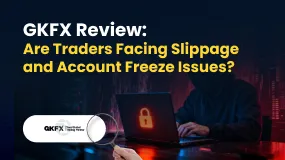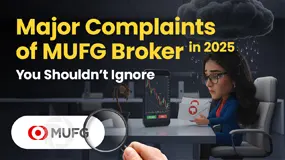简体中文
繁體中文
English
Pусский
日本語
ภาษาไทย
Tiếng Việt
Bahasa Indonesia
Español
हिन्दी
Filippiiniläinen
Français
Deutsch
Português
Türkçe
한국어
العربية
How to Manage Your Foreign Exchange Trades Like a Professional
Abstract:It takes more than simply knowing how to spot excellent deals and enter them effectively to become a great Forex trader. If you don't know how to manage your trades after they've been entered - when to alter the stop loss or take profit level, when to add or remove money from the transaction, and when to leave – you'll have a hard time making money in Forex. Join me as I teach you how to handle your Forex trades in the video below.

It takes more than simply knowing how to spot excellent deals and enter them effectively to become a great Forex trader. If you don't know how to manage your trades after they've been entered - when to alter the stop loss or take profit level, when to add or remove money from the transaction, and when to leave – you'll have a hard time making money in Forex. Join me as I teach you how to handle your Forex trades in the video below.
The 4 Stages of a Trade
It is important to distinguish the four main phases of a Forex trade – this way, you can test your skills on each phase and understand what needs more work and what does not. The 4 phases are:
l Trade identification: your setup conditions.
l Trade execution: your entry trigger.
l Trade management: what you do when your trade is “live”. Having a plan that considers the various scenarios that can materialise once your trade is live is essential to maintain a sense of control over your trading. It also allows you to respond to the various curve balls the market will throw at you. I will cover several plan components within the remainder of this article. At a very basic level, Forex trade management must give you the answers to the following questions:
1. What do I do if the trade reaches my profit objective quickly?
2. What do I do in case of reversal right after entry?
3. What do I do in case of an intra-trade drawdown?
4. What do I do in case the trade moves steadily in my favour (but without reaching the target) and then reverses?
5. What do I do if the market posts a reversal pattern?
Trade Exit: the decision to completely close the trade and wait for the next opportunity.
What Is the Importance of Forex Trade Management?
As a trader, trade management is critical to your survival. Consider the most significant equation you'll ever encounter in your trading career to understand why:
Expectancy = Average Win * Win% - Average Loss * Loss%
The average win and average loss are computed in “R-terms,” which are risk-adjusted return units. If your stop loss is 50 pips from your entry and you exit with 50 pips profit, you made 1R (50 pips profit / 50 pips risk).
Simply divide your profit by your risk each transaction to determine the “R” of a trade. Because trading is all about managing risk and producing superior risk-adjusted returns, you should now see why thinking about trade results in “R-terms” is preferable to thinking in dollars.
Returning to the expectation equation, achieving the goal of a constantly positive expectancy is difficult, but the formula explains how to achieve it:
Maintain the highest feasible Average Win/Average Loss Ratio (you are doing well if your average win is at least twice the size as your average loss)
Maintain as high a victory percentage as feasible (but over time, this will probably average close to 50 percent , which means that the key to profitability is averaging losses that are much smaller than your average win)
Because you will be more prone to making quick, emotional judgments if you don't have a clear plan, trade management is crucial. You will most likely lose money over time if your winning trades do not average at least 1R.
Another thing to consider is that if you keep your losses minimal in comparison to your wins, you will be considerably more calm because the minimum win rate required to avoid losing money will be lower. Here's the arithmetic to back it up:
Minimum Win Rate = 1/ (1 + Avg. Reward-to-Risk)
Which means that to be profitable:
An average return of 1R requires the win rate to be higher than 50%.
An average return of 2R requires the win rate to be higher than 33%.
An average return of 3R requires the win rate to be higher than 25%.
This hopefully sounds quite straightforward. However, there is something which complicates this calculation, and takes us back to the importance of trade management: risk and reward are not static, and both change during a trades life cycle.
Principles of Forex Trade Management in a Nutshell
The ideas of the trade management equation apply equally whether you are a mean-reversion (range) trader or a trend trader because:
A mean reversion trader will have a greater win rate but lower average winnings, thus trailing stops on a portion of the trade is a difficulty for them.
A trend trader will make significant profits but have a lower success rate, therefore the trick for them is to attempt to make some money right away while avoiding full stop-outs.
Trading Strategy for Foreign Exchange
Adjust your expectations based on the type of market you're in.
One last aspect to consider is if the market is trading in a range or a trend. The specific trade management technique you choose, as well as your trade expectations, should be based on a thorough grasp of market types: are we in a rangebound or trending market?
You can't anticipate trades to survive long in a range-bound market since the range barriers will almost certainly draw counter movement.
In a trending market, on the other hand, you may anticipate your trade to last longer if you try to roll it over and let it develop using trailing stops.
Here's another GBP/USD trading example from one of my students. The student was prepared to make a full trade exit at the prior support zone since “Cable” is obviously in a rangebound environment.
Conclusion
The third fundamental component of a solid trading methodology is trade management. Here are some guidelines to follow while developing the optimal trade management approach for your individual trading model:
Trade management should be employed in the same timeframe as when you first started trading.
If you're trading around a day job, consider executing and managing your trades from a 4H period at the very least.
Adapt your trading strategy to market conditions: if you're trading mean-reversion, try to maximize momentum on the first 2/3 of the position but run the last 1/3 with a trailing stop; if you're trading trends, try to maximize momentum on 1/3 of the position while trailing the stop on the other 2/3 as long as the trend lasts.
In any case, keep losses to a minimum by never allowing a big win to turn into a big loss.
Whatever you do, make sure your Forex trade management model is a process; otherwise, you'll be more inclined to make emotional decisions rather than reacting analytically to market signals.

Disclaimer:
The views in this article only represent the author's personal views, and do not constitute investment advice on this platform. This platform does not guarantee the accuracy, completeness and timeliness of the information in the article, and will not be liable for any loss caused by the use of or reliance on the information in the article.
Read more

Seacrest Markets Exposed: Are You Facing Payout Denials and Spread Issues with This Prop Firm?
Seacrest Markets has garnered wrath from traders owing to a variety of reasons, including payout denials for traders winning trading challenges, high slippage causing losses, the lack of response from the customer support official to address withdrawal issues, and more. Irritated by these trading inefficiencies, a lot of traders have given a negative review of Seacrest Markets prop firm. In this article, we have shared some of them. Take a look!

GKFX Review: Are Traders Facing Slippage and Account Freeze Issues?
Witnessing capital losses despite tall investment return assurances by GKFX officials? Do these officials sound too difficult for you to judge, whether they offer real or fake advice? Do you encounter slippage issues causing a profit reduction on the GKFX login? Is account freezing usual at GKFX? Does the United Kingdom-based forex broker prevent you from accessing withdrawals? You are not alone! In this GKFX review guide, we have shared the complaints. Take a look!

Is Seaprimecapitals Regulated? A Complete Look at Its Safety and How It Works
The straightforward answer to this important question is no. Seaprimecapitals works as a broker without proper regulation. This fact is the most important thing any trader needs to know, because it creates serious risks for your capital and how safely the company operates. While this broker offers some good features, like the popular MetaTrader 5 platform and a low starting deposit, these benefits cannot make up for the major risks that come from having no real financial supervision. This article will give you a detailed, fact-based look at Seaprimecapitals regulation, what the company claims to do, the services it provides, and the clear differences between official information and user reviews. Our purpose is to give you the information you need to make a smart decision about the risks and benefits of working with this company.

Major Complaints of MUFG Broker in 2025 You Shouldn’t Ignore
2025 is about to end, and if you still want to be a trader or investor and are looking for a broker to invest with. It is important to read real user complaints first. This will help you understand the kind of problems users are facing with MUFG broker. In this article, we will tell you about the major complaints users have reported about MUFG in 2025, so you know what to watch out for. Do not ignore this MUFG broker article and understand the problems.
WikiFX Broker
Latest News
Simulated Trading Competition Experience Sharing
WinproFx Regulation: A Complete Guide to Its Licensing and Safety for Traders
Interactive Brokers Expands Access to Taipei Exchange
Axi Review: A Data-Driven Analysis for Experienced Traders
INZO Regulation and Risk Assessment: A Data-Driven Analysis for Traders
Cleveland Fed's Hammack supports keeping rates around current 'barely restrictive' level
Delayed September report shows U.S. added 119,000 jobs, more than expected; unemployment rate at 4.4%
The CMIA Capital Partners Scam That Cost a Remisier Almost Half a Million
eToro Cash ISA Launch Shakes UK Savings Market
Is Seaprimecapitals Regulated? A Complete Look at Its Safety and How It Works
Currency Calculator



